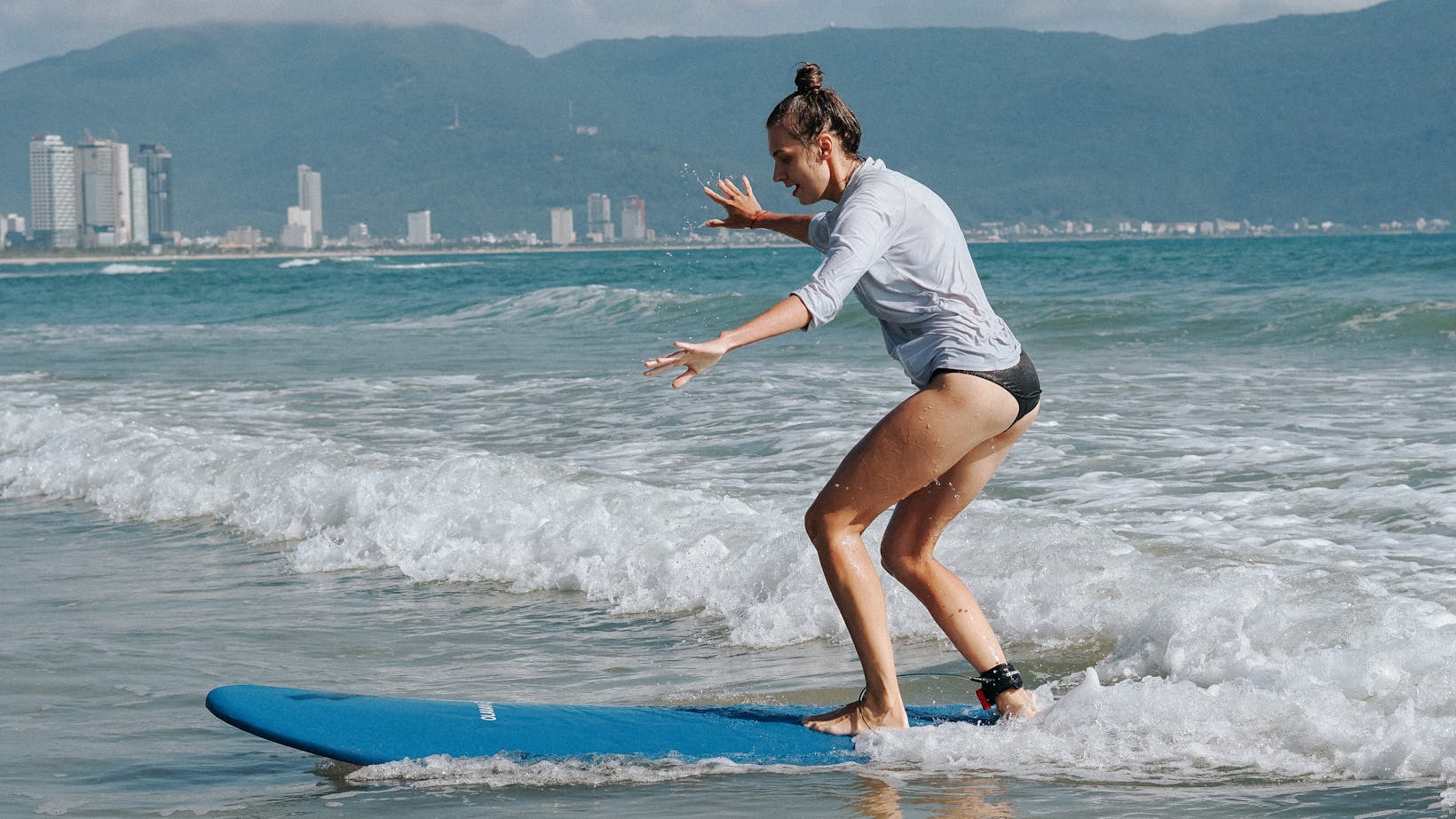Surfing captures the imagination like few other sports, offering a blend of thrill, harmony with nature, and physical challenge. For beginners, the allure of riding the waves can be both exciting and intimidating. This article serves as a gateway to the world of surfing, designed to equip novices with the foundational knowledge and confidence needed to embark on this exhilarating journey.
Surfing For Beginners
Transitioning smoothly from the introductory context that sets the stage for a beginner’s journey into surfing, this section delves into the core principles every novice should grasp. Surfing basics encompass a broad range of fundamentals, crucial for a solid foundation in the sport. Firstly, understanding wave dynamics is essential; knowing how waves form and break helps surfers decide where to paddle out and catch waves. Secondly, mastering the pop-up technique, which involves transitioning from lying on the board to standing in one fluid motion, is key for riding waves successfully. Equipment knowledge, including selecting the right surfboard and wetsuit, tailors one’s experience to be as enjoyable as possible. Moreover, learning about surf etiquette ensures mutual respect and safety among surfers in the water. By absorbing these essentials, beginners set themselves up for a rewarding progression in their surfing abilities, linking directly to the subsequent guidance on improving techniques and safety measures.
Choosing the Right Surfboard
Selecting the appropriate surfboard marks a critical step in a beginner surfer’s journey, directly influencing their learning curve and enjoyment in the water. For beginners, longboards are the go-to option due to their stability, buoyancy, and ease of catching waves. Typically, these boards measure between 8 and 12 feet, offering ample surface area to ensure better balance and wave catching effectiveness for those new to surfing.

Soft-top surfboards also serve as excellent choices for novices, providing a safer and more forgiving surface to master the basics of surfing. Their soft foam construction reduces the risk of injuries during falls, making them ideal for learning pop-ups and wave timing without the added worry of getting hurt.
While the urge to start with a shortboard might be strong, beginners find these boards challenging to handle due to their reduced stability and buoyancy. Advancing to a shortboard comes after gaining sufficient experience on longer, more forgiving boards.
Essential Surfing Techniques
Mastering essential surfing techniques is pivotal for beginners to progress from selecting the right surfboard to skillfully riding waves. Key techniques include paddling, the pop-up, and wave timing, each contributing significantly to a surfer’s success in the water.
- Paddling: Efficient paddling is crucial for catching waves. It involves laying flat on the surfboard, using both arms in a cupped position to propel oneself forward. Proper form and strength in paddling determine the ability to catch waves early.
- The Pop-Up: This technique is the transition from lying on the surfboard to standing. The pop-up should be swift and fluid, with surfers placing their hands alongside their chest and pushing their body up in one smooth motion while bringing their feet underneath them.
- Wave Timing: Understanding when to start paddling towards a wave is essential. Beginners learn to read the ocean and identify the best moment to catch a wave, ensuring they’re neither too early nor too late.
Surf Etiquette and Safety
Transitioning from selecting the right surfboard and mastering essential surfing techniques, beginners must also learn about surf etiquette and safety. These guidelines ensure that everyone in the water has a positive and safe experience. Surf etiquette includes:

- Respecting the Lineup: Surfers must wait their turn to catch waves, avoiding “dropping in” on someone else’s wave.
- Right of Way: The surfer closest to the peak of the wave has priority. It’s crucial to avoid paddling for a wave when someone is already on it.
- Holding onto the Board: Losing control of the surfboard can be dangerous. Beginners should always try to keep hold of their board to prevent injuries to themselves or others.
- Apologizing for Mistakes: Mishaps happen. Offering a simple apology for accidental collisions or interference maintains a friendly atmosphere.
Safety measures are equally important:
- Understanding Rip Currents: Beginners should learn how to identify and escape rip currents, often a hazard in surfing areas.
- Wearing a Leash: A surf leash keeps the board attached to the surfer, preventing it from hitting others and making it easier to retrieve after a fall.
- Staying Within Comfortable Limits: Beginners should practice in conditions suited to their current skill level, gradually progressing as they become more confident.
